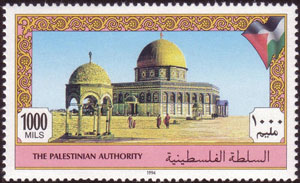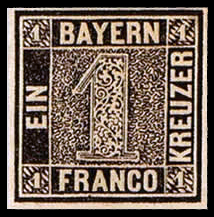The Universal Postal Union, established by the Treaty of Bern of 1874, is a specialized agency of the United Nations (UN) that coordinates postal policies among member nations, in addition to the worldwide postal system. The UPU contains four bodies consisting of the Congress, the Council of Administration (CA), the Postal Operations Council (POC) and the International Bureau (IB). It also oversees the Telematics and Express Mail Service (EMS) cooperatives. Each member agrees to the same terms for conducting international postal duties. The UPU's headquarters are located in Bern, Switzerland.
The Scott catalogue of postage stamps, published by Scott Publishing Company, now a subsidiary of Amos Media, is updated annually and lists all the stamps of the world that its editors recognize as issued for postal purposes. It is published in fourteen large volumes that include twelve volumes containing all the countries of the world that have ever issued postage stamps, the United States Specialized Catalog, and the 1840–1940 Classic Specialized Catalogue. It is also produced in non-printable CD and DVD editions. The numbering system used by Scott to identify stamps is dominant among stamp collectors in the United States, Canada and Mexico.
Philatelists' traditional method of identifying postage stamps uniquely has long been to number each country's stamps consecutively; Norway #1 is the 4-skilling blue stamp issued in 1855, and so forth. However, this seemingly straightforward numbering system runs into immediate difficulties, which have been solved in different ways by different stamp catalogs.

A stamp catalog is a catalog of postage stamp types with descriptions and prices.
India Post is a government-operated postal system in India, part of the Department of Post under the Ministry of Communications. Generally known as the Post Office, it is the most widely distributed postal system in the world. Warren Hastings had taken initiative under East India Company to start the Postal Service in the country in 1766. It was initially established under the name "Company Mail". It was later modified into a service under the Crown in 1854 by Lord Dalhousie. Dalhousie introduced uniform postage rates and helped to pass the India Post Office Act 1854 which significantly improved upon 1837 Post Office act which had introduced regular post offices in India. It created the position Director General of Post for the whole country.

A revenue stamp, tax stamp, duty stamp or fiscal stamp is a (usually) adhesive label used to designate collected taxes or fees on documents, tobacco, alcoholic drinks, drugs and medicines, playing cards, hunting licenses, firearm registration, and many other things. Typically, businesses purchase the stamps from the government, and attach them to taxed items as part of putting the items on sale, or in the case of documents, as part of filling out the form.
A joint issue is the release of stamps or postal stationery by two or more countries to commemorate the same topic, event or person. Joint issues typically have the same first day of issue and their design is often similar or identical, except for the identification of country and value.

The Europa postage stamp is an annual joint issue of stamps with a common design or theme by postal administrations of member countries of the European Communities (1956–1959), the European Conference of Postal and Telecommunications Administrations (CEPT) from 1960 to 1992, and the PostEurop Association since 1993. Europe is the central theme.

Illegal stamps are postage stamp-like labels issued in the names of existing independent countries or territories used to defraud postal administrations, stamp collectors, and the general public. Often, but not always, a member nation of the Universal Postal Union (UPU) will have asked the UPU to issue an "International Bureau Circular" advising others of the illegal stamps. According to the UPU, the market is estimated to be at least $500 million per year.
This is a survey of the postage stamps and postal history of Croatia.

The postage stamps and postal history of Israel is a survey of the postage stamps issued by the state of Israel, and its postal history, since independence was proclaimed on May 14, 1948. The first postage stamps were issued two days later on May 16, 1948. Pre-1948 postal history is discussed in postage stamps and postal history of Palestine.

The Fédération Internationale de Philatélie (FIP) was founded on 18 June 1926, and is the world federation for philately based in Zürich, Switzerland.

The Palestinian National Authority began in 1994 to issue stamps and operate postal services as authorized by the Oslo Accords.

This is a survey of the postage stamps and postal history of Estonia. The stamps of Estonia are issued by the postal administration Eesti Post which is the country's only provider of universal postal services.

This is a survey of the postage stamps and postal history of Germany and philatelically related areas. The main modern providers of service were the Reichspost (1871–1945), the Deutsche Post under Allied control (1945–1949), the Deutsche Post of the GDR (1949–1990), the Deutsche Bundespost (1949–1995), along with the Deutsche Bundespost Berlin (1949–1990), and are now the Deutsche Post AG.
The Bureau d'études des postes et télécommunications d'outre-mer was a French public institution, financially autonomous. Linked to the French Minister of Cooperation, its goal was to help in the postal and telecommunication areas the French Overseas territories and the newly independent states that asked for it. It operated from 1956 until late 1994.

The postage stamps and postal history of Christmas Island, in the Indian Ocean, was linked to its original economic situation until 1993. Mainly ruled by a phosphate production commission, the island was part of the British Straits Settlements colony from 1901 to 1942, then of Singapore from 1946 to 1958. Although it was placed under Australian control in 1958, the island remained postally and philatelically independent until 1993 when Australia Post became the island's postal operator.

The postage stamps and postal history of Papua New Guinea originated in the two colonial administrations on the eastern part of the island of New Guinea and continued until their eventual merger, followed by independence in 1975.

The first postage stamps of Bhutan were issued in 1962, the same year that the first motorable road was opened. Before that there was a mail delivery system in place for official mail using mail runners, and between 1955 and 1962 revenue stamps were accepted as payment for internal mail. With the opening up of Bhutan in the early 1960s, a formal postal system was introduced. The American entrepreneur Burt Todd assisted in establishing a postage stamp program in the country and Bhutan became known for the unusual designs and materials of its stamps which were chosen by Todd specifically to attract attention. With the assistance of the Indian postal advisor Dr. K. Ramamurti, who was in Bhutan from 1964 to 1968, a proper postal organization and infrastructure was set up under the leadership of a young Bhutanese officer Mr. Lam Penjor, who became the Director of the Department of Posts and Telegraphs.
This is a survey of the postage stamps and postal history of Mount Athos.